Long u – Book 5 of 5
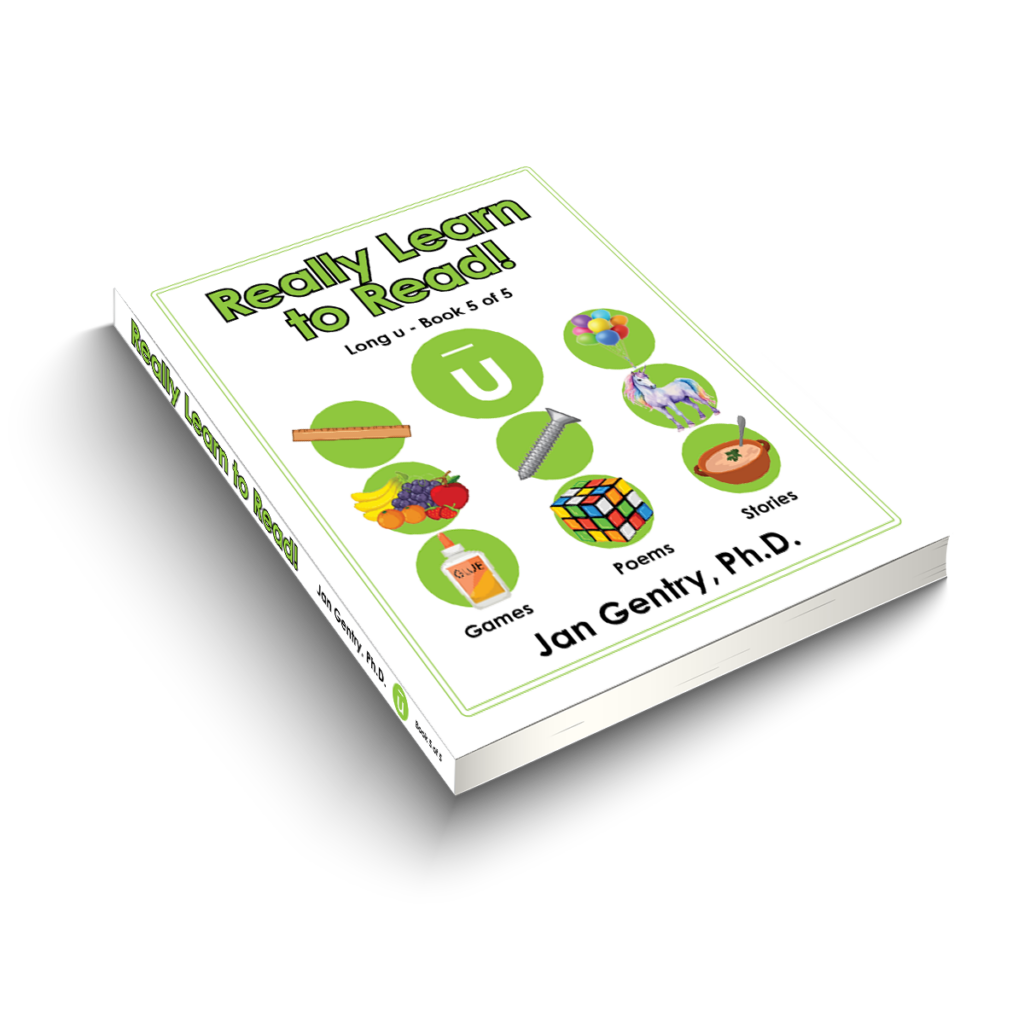
Long u, the last book in the Long Vowels Series, further provides systematic phonics instruction and higher-level comprehension strategies that inspire a desire to read, promote confidence in acquiring new vocabulary found in instructional text, and ensure success in understanding and evaluating what is read. All the true stories, meant for instruction and to peak interest, are on Grades 5-7 reading levels for children, teenagers, and adults. The poems, stories, and activities include many words previously learned in Long a – Book 1, Long i – Book 2, Long o – Book 3, and Long e – Book 4. Readers will be comfortable with each familiar lesson format that presents colorful graphics, silly poems and interesting stories, and activities with long u words and new multi-syllable sight words. Reading, vocabulary, and spelling skills continue to be broadened through activities with the numerous homophones found in the English language. Readers become purposeful and active as they apply advanced comprehension strategies when evaluating to make judgment based on facts, determining the author’s intent, judging topic relevance, and supporting their viewpoints.
Student Edition
Make Words
Each lesson begins with readers combining the selection of beginning consonants (onsets) with lists of long u rhyming word families (rimes). If the reader decides that the sound is a real word, the onset is written next to the rime. This is a fun game, as learners write as many words as they can with these smallest units of sounds. Reading fluency is strengthened when readers recognize the same long u spelling patterns in other words, transfer the sounds, and successfully decode the new words. This word recognition ability is essential for readers to focus on what they are reading, rather than having comprehension interrupted while decoding words.
Goofy Poems
In the next activity, readers are given new sight words in a dotted box and then read four silly poems that give review and practice with the sight words and words from Make Words. Reading fluency and comprehension are better ensured when learners instantly recognize some words “on sight,” as opposed to decoding them. A sight word bank gives an advantage to the reader, especially when encountering long multi-syllable words. Additional long u rhyming words not listed in the Make Words activity are underlined in the poems to promote recognition of the same vowel group endings, spelling patters, and phonetic sounds.
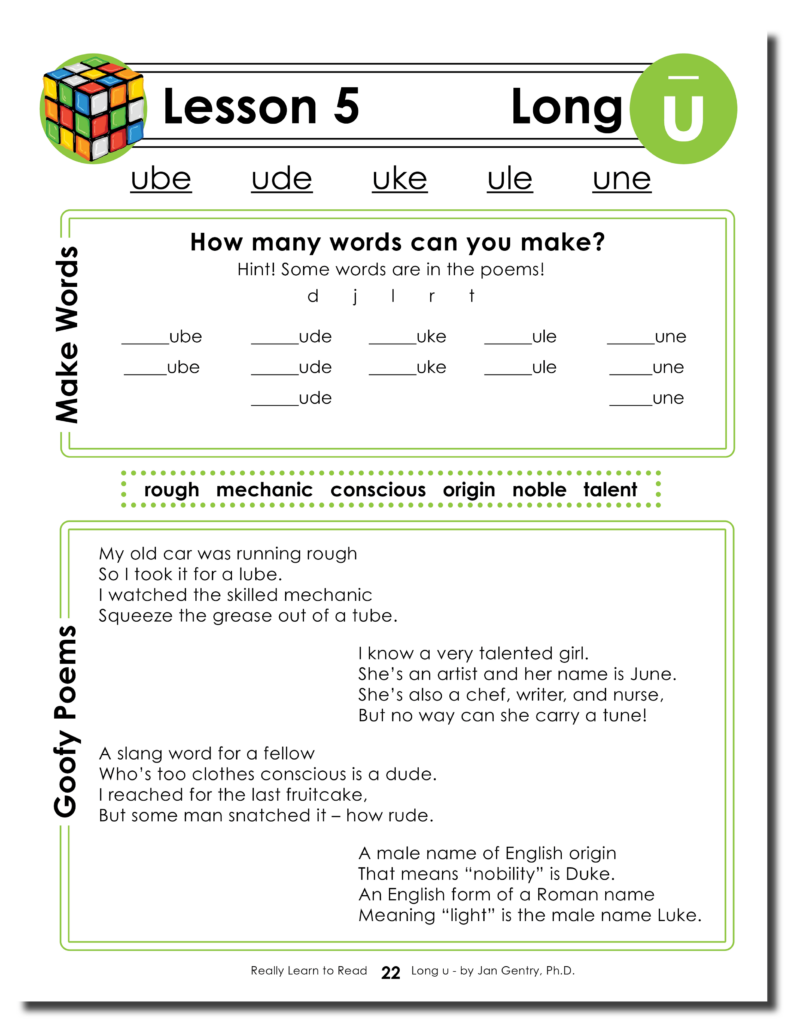
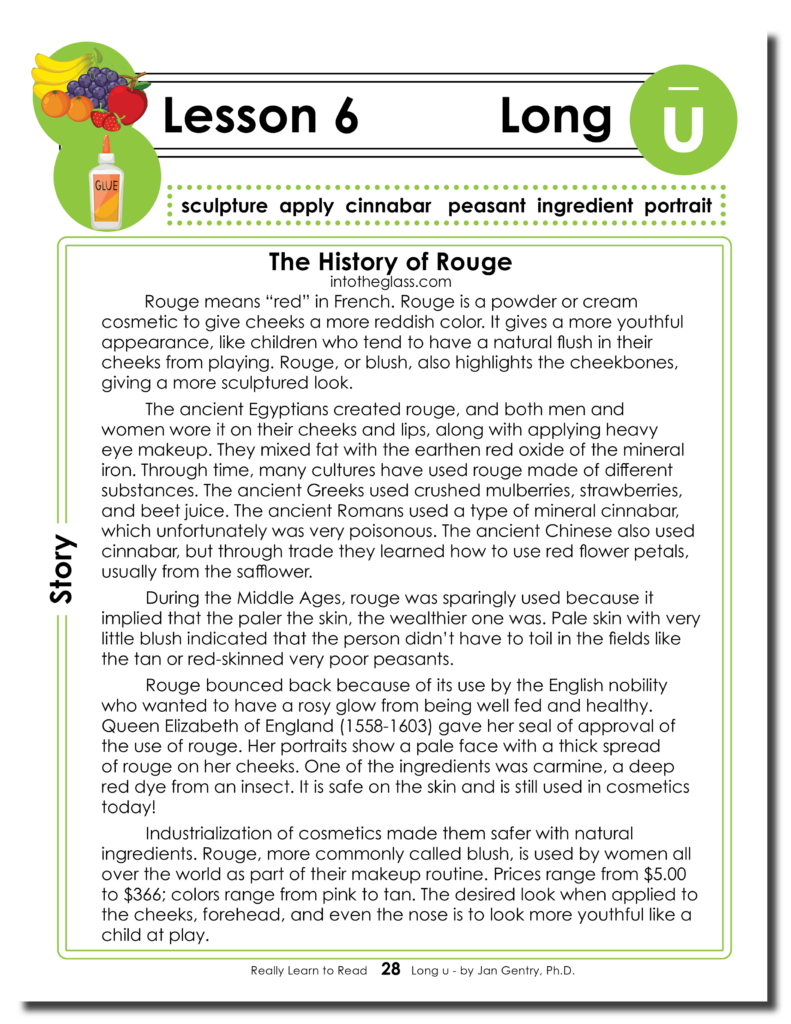
Story
All the stories in Long u are true! New sight words are introduced in a dotted box, followed by a factual story about a historical event, important person, place, or simply a surprising fact. Learners strengthen reading skills while also learning about history, science, health, and current events! Readers practice long u words and sight words, and continue to master meanings of inflected endings, contractions, compound words, cardinal and ordinal numbers, abbreviations, fractions, dates, idioms, word symbols, homographs, and homphones. The informational texts help develop creative comprehension, as true stories can inspire a reader’s imagination of alternative stories that could have happened in different places or times, or with other people making different decisions.
Question & Answer
After each poem and story, readers interact with multiple activities to reinforce the skills just learned. The question and activities formats include true and false, short answer, matching, fill in the blank, and multiple choice. Short answer written responses that reinforce sentence structure, clear expression of thought, and spelling skills deepen understanding of the English language. Comprehension of informative text meant for instruction requires advanced thinking skills of making inferences, evaluating to make judgment of text relevance, supporting viewpoint, predicting, determining the author’s purpose, and analyzing text structure.
Draw a Picture
After completing the Question & Answer section, a picture box with directions on what to draw provides a fun but meaningful activity. Story comprehension and the ability to create mind pictures while reading are demonstrated in the reader’s drawings of the scenes, characters, themes, or details in the story. Picture box directions stir recall of the mind pictures and inspire imagination and creativity.
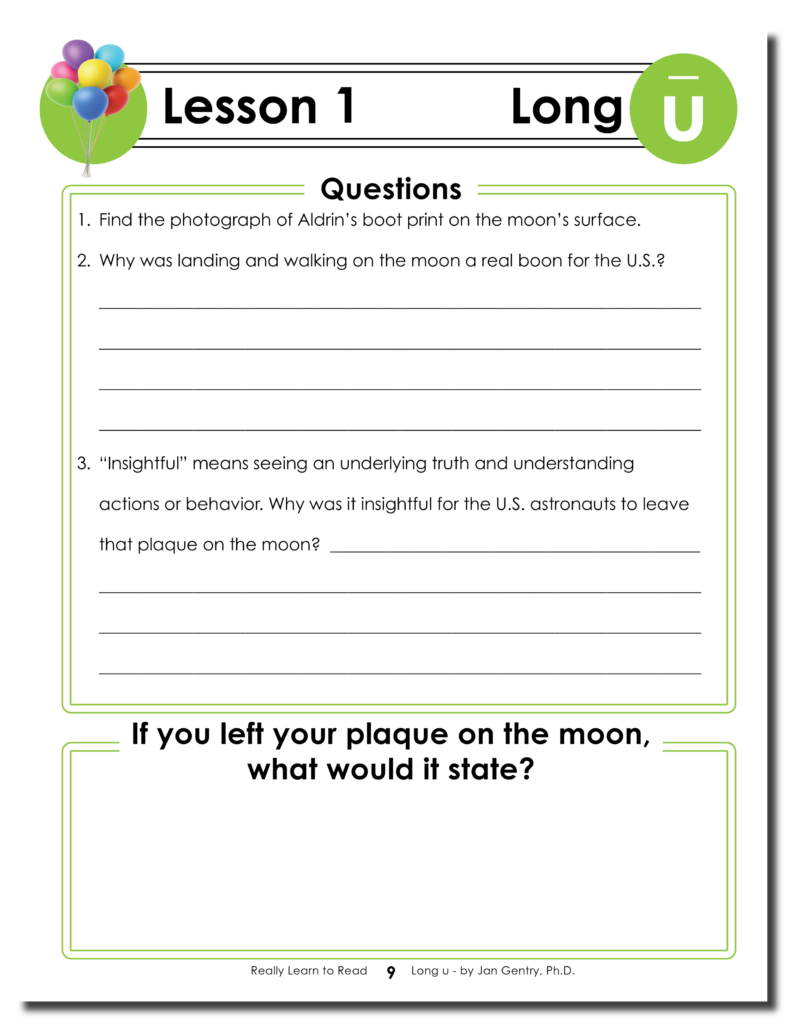
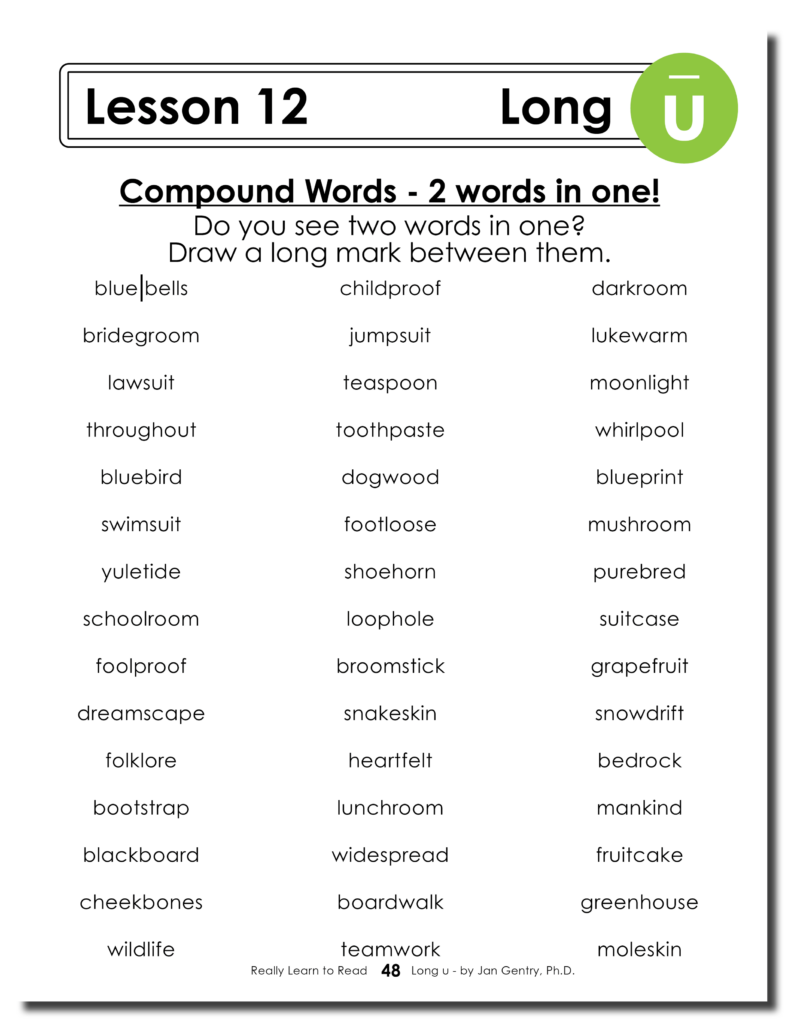
Compound Words
A fun enrichment activity at the end of the Long u workbook is recognizing compound words and drawing a line between the two words. When two noun words are combined, the compound word has a new special meaning! This awareness encourages learners to find other compound words or creatively combine two nouns on their own. Compound words enhance vocabulary and expand language proficiency as learners are encountering longer multi-syllable words to read and spell.
Identifying Antonyms
A final enrichment activity is the matching of opposite words. Awareness of antonyms improves critical thinking skills, strengthens comprehension, and enhances vocabulary knowledge. This hands-on activity of drawing a line from one word to its opposite helps learners by building background knowledge, determining word associations, grasping multiple word meanings, and reinforcing spelling accuracy.
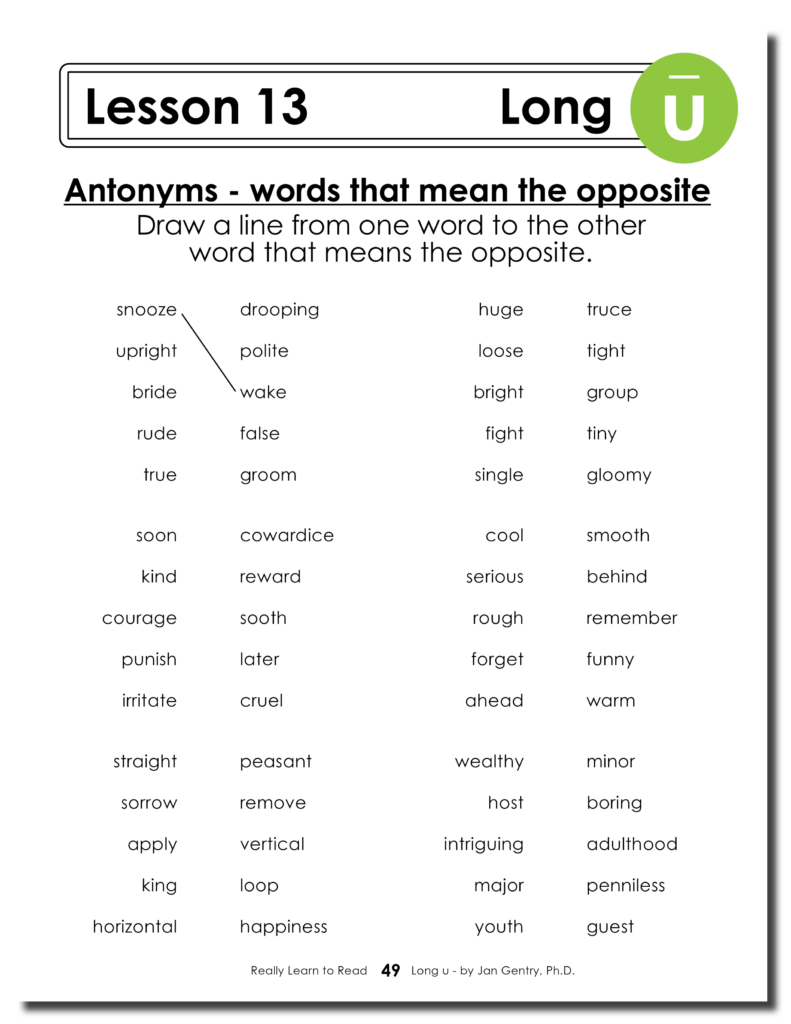
Teacher Edition
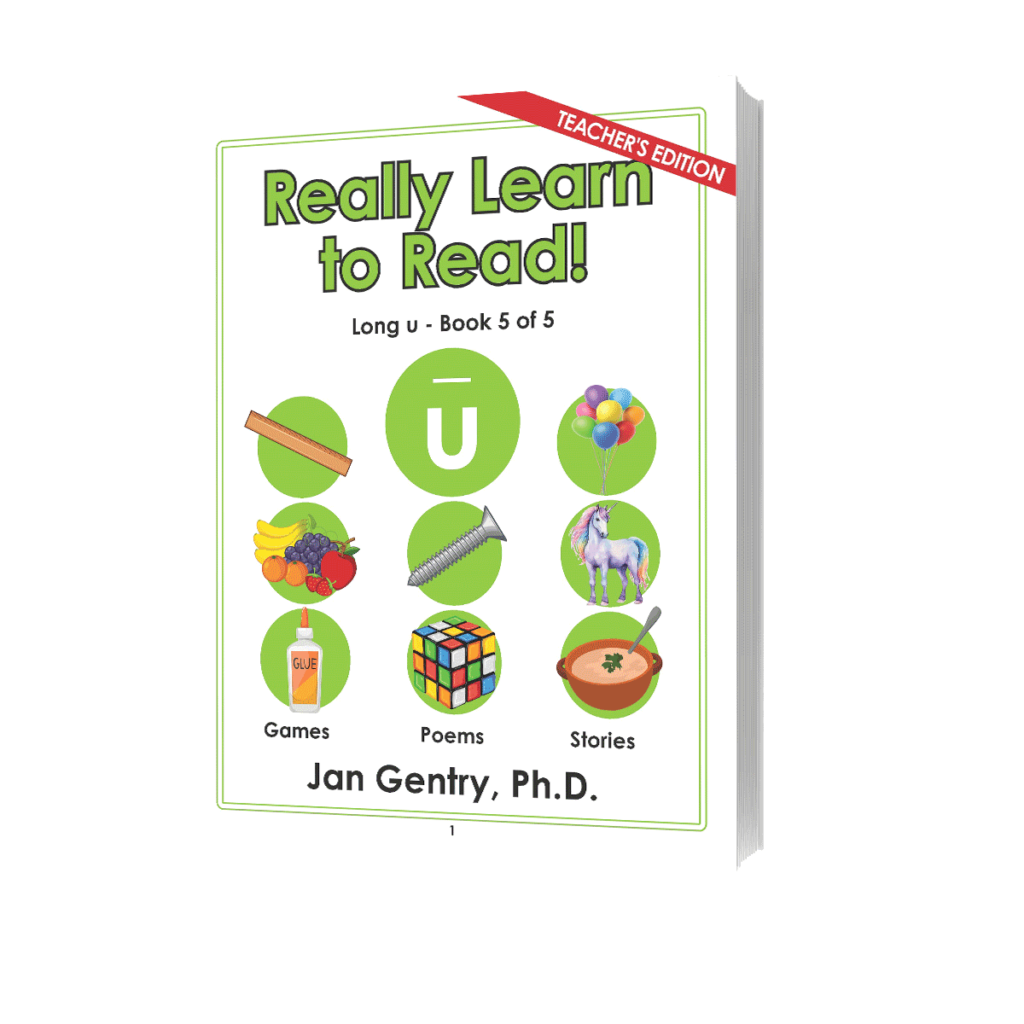
In addition to the Long u – Book 5 for the student, the Teacher Edition book includes:
- Answers to questions and activities in each lesson, written in red for easy recognition
- Phonics and Decoding Skills listed in specific detail for each lesson
- Reading Comprehension Skills listed for each question in the poems and stories
- Quick Reference Guide to help quickly target specific areas of attention
This edition provides the reading instructor with a thorough systematic, well-defined, and successful phonics curriculum.
Answers
The Long u Teacher Edition, identical to the student’s workbook, provides easy to read answers in red print for all questions and activities. Monitoring and evaluating a student’s progress in phonics and decoding, vocabulary, comprehension, and writing skills are easily identified and assessed. For prompting students’ answers or responding to different students’ answers that are creative or opinionated, teachers are provided with motivating ideas, resourceful suggestions, and multiple answers.
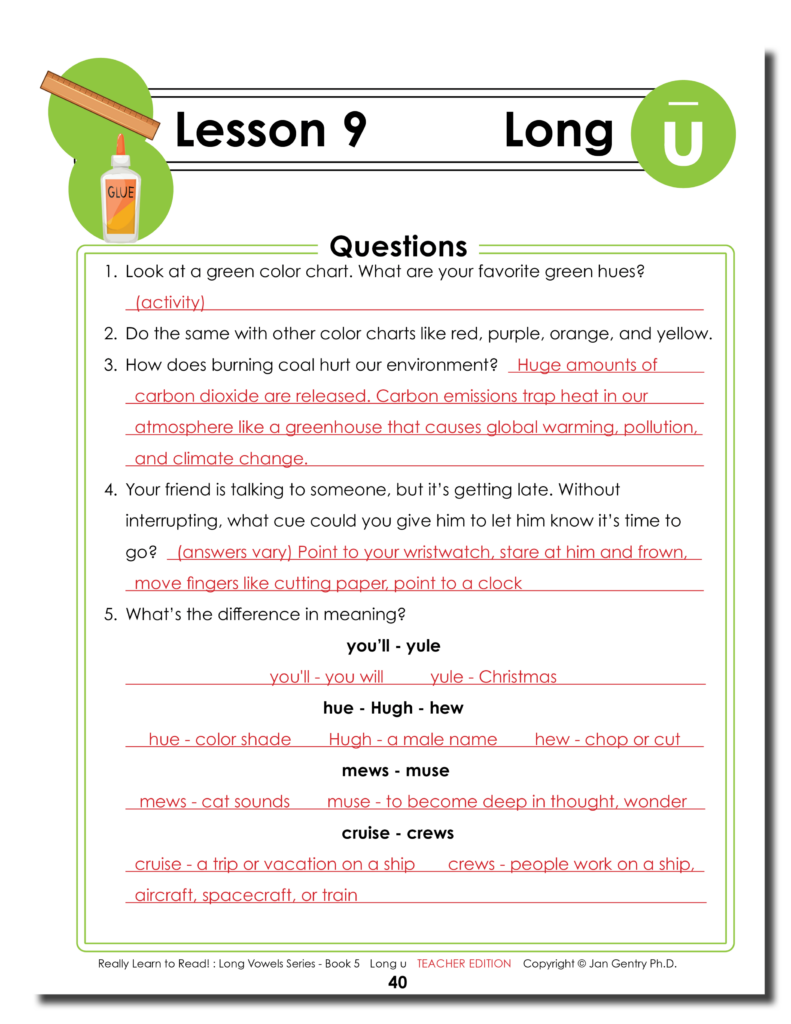
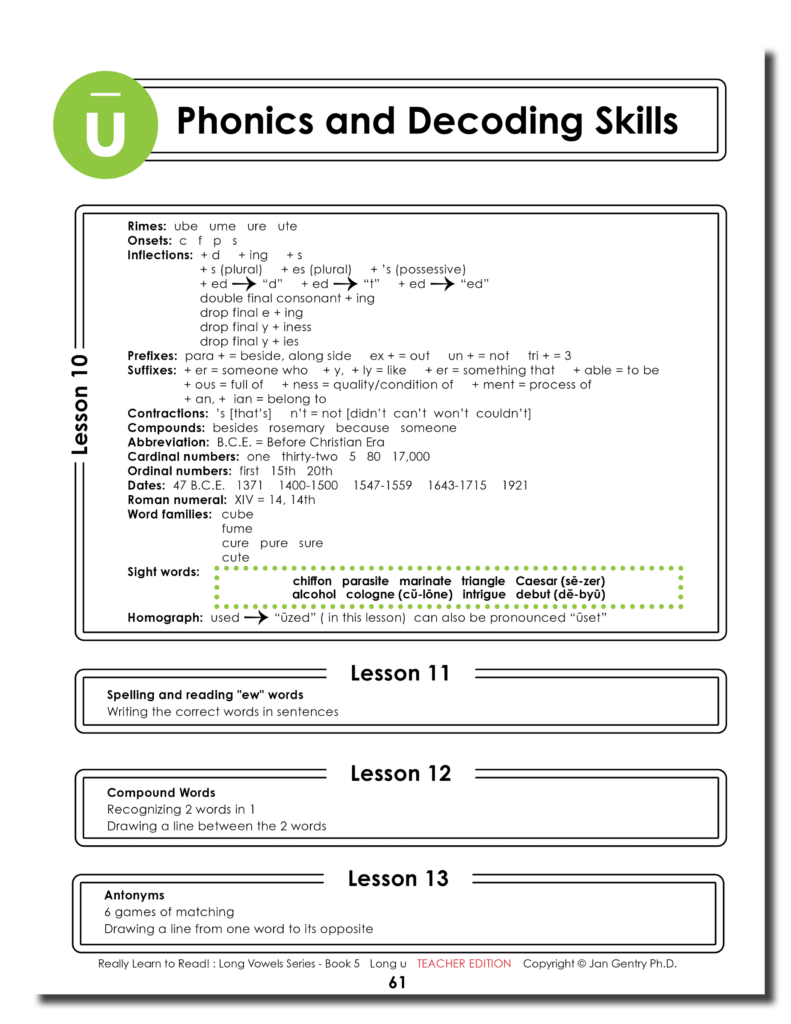
Phonics and Decoding Skills
The Phonics and Decoding Skills section conveniently equips teachers with a straightforward, detailed list of all reading, vocabulary, and other literacy skills in each lesson: long u word family endings (rimes), beginning consonants (onsets), inflected endings, prefixes and suffixes, contractions, compound words, abbreviations, cardinal and ordinal numbers, fractions, dates, idioms, word symbols, long u word families, and sight words. This condensed format gives teachers the convenience of quickly reviewing each lesson for determining the skills the learner has mastered or that require additional practice for reading success.
Reading Comprehension Skills
The Reading Comprehension Skills section serves as a valuable reference tool for teachers to trace each question and activity in every lesson to its specific skill objective. For comprehension of instructional text, objectives include using prior knowledge, real life application, using references, and vocabulary meaning. Objectives on the evaluative comprehension level include evaluating to make judgment based on facts and supporting viewpoint. Referring to this table format, teachers can easily monitor the categories of comprehension skills that are developing, needing practice, or being mastered as the reader progresses through Grades 5-7.


Quick Reference Guide
The Quick Reference Guide provides teachers with immediate identification of skills in each lesson. Skill categories include rimes and onsets, inflections, prefixes and suffixes, contractions, compounds, abbreviations, dates and numbers, idioms, and word symbols. Accurate assessment of literacy progress is essential and practical in this chart format which lends itself for highlighting and noting skills to be learned, as well as those to be reviewed and practiced for reading success.
Order PDF Version
Each book is available individually, or as a set with the other books in the series. The PDF format allows teachers to tailor lessons to their students’ needs by printing specific sections at a time. You’ll be impressed by the progress learners make while having fun mastering the English language.



